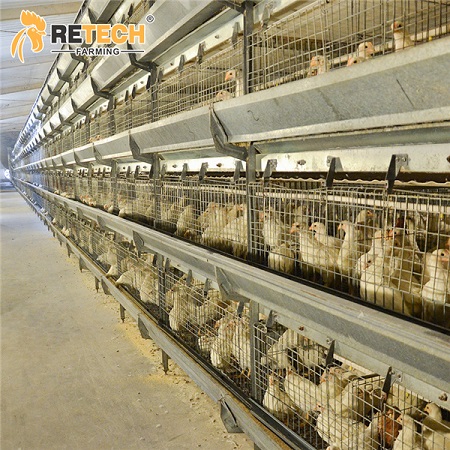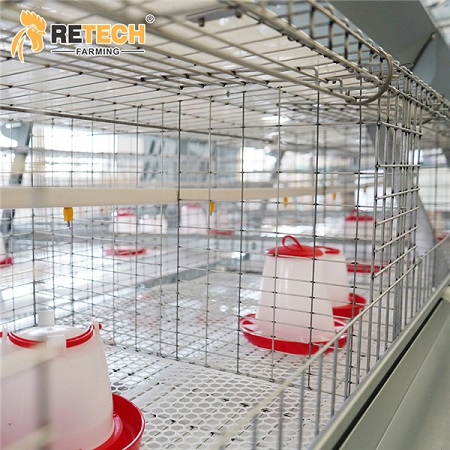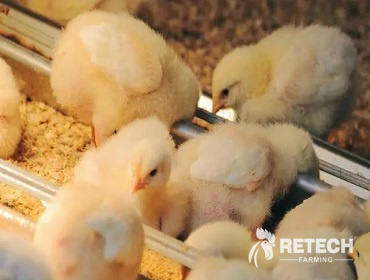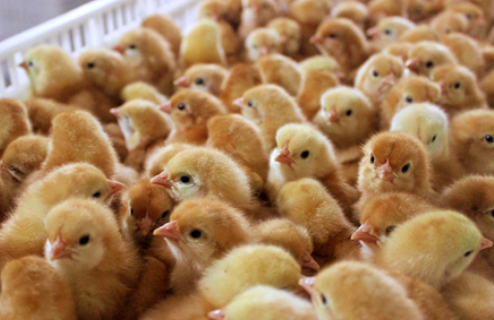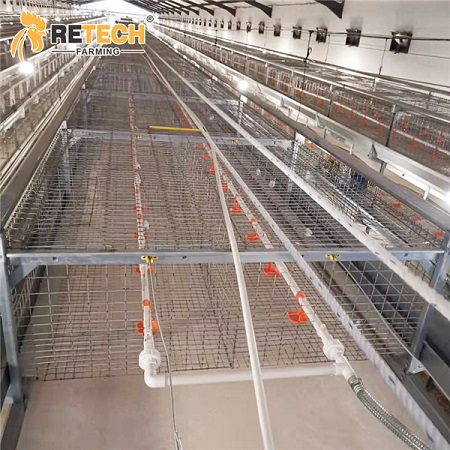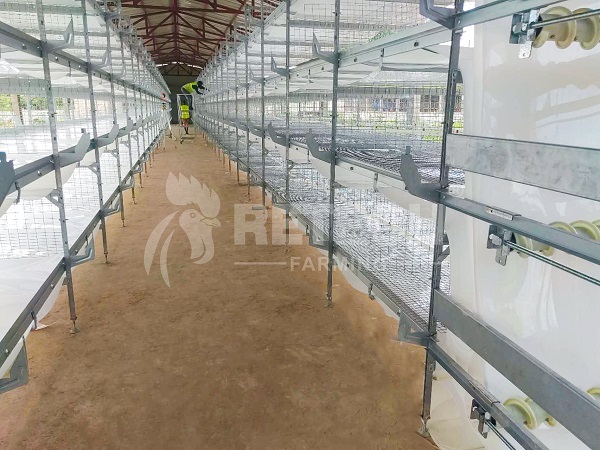If you plan to raise 10,000 chicks on a large scale, you should first choose the right brooding equipment. Because this is directly related to the survival rate, growth rate and breeding income of the chicks. Below I will introduce in detail how to choose brooding equipment:
1. Choice of brooding method:
Before choosing brooding equipment, you must first determine the brooding method. Common brooding methods are:
1. Ground brooding:
The chicks are raised directly on the ground.
Advantages: Low cost and simple operation.
Disadvantages: Poor sanitary conditions, prone to disease, difficult to control density, difficult to manage, not suitable for large-scale breeding.
2. Net brooding:
The chicks are raised on a net bed off the ground.
Advantages: Better sanitary conditions, reduced disease, easy to clean feces, easy to control density, and convenient management.
Disadvantages: High cost, need to replace the net bed regularly.
3. Cage equipment brooding:
The chicks are raised in battery cages.
Advantages: High density, space saving, easy to manage, and reduced disease.
Disadvantages: Highest cost, complex equipment, and regular cleaning of feces is required.
For a breeding scale of 10,000-20,000 chicks or larger, it is recommended to choose cage brooding to improve the survival rate and management efficiency of brooding.
2. Selection of chicks
Selecting healthy chicks requires a comprehensive investigation of the chick source, health status, and epidemic prevention management. The following are specific precautions and reference suggestions:
Production purpose:
Egg-laying: Hy-Line Brown, Roman Brown, etc;
Meat: Cobb, AA+ white feather chickens;
1. Choose a regular chicken farm
1.1 Qualifications and hygiene
- Give priority to regular chicken farms with a “Livestock and Poultry Production and Operation License” to ensure that the seed source is legal.
- Observe whether the chicken farm environment is hygienic and the facilities are standardized, and avoid choosing dirty or extensively managed sites.
2. Check the epidemic prevention situation
Vaccination records : It is required to check the vaccination records of chicks, especially the immunization status of common diseases such as Marek’s disease and Newcastle disease.
Pay attention to weight changes: Normally vaccinated weaned chicks will be slightly lighter due to reduced feed intake, but being too light (such as less than 32 grams) or too heavy may be a problem
3. Appearance inspection:
Feathers: Healthy chicks have smooth and neat feathers, without bald spots or hair loss.
Eyes: The eyes are bright and clear, without secretions.
Nostrils: The nostrils are dry, without secretions or odors.
Mouth: The mouth should be well closed, without swelling or abnormalities.
Belly: The abdomen should be full, without obvious depressions or swelling.
Activity: Healthy chicks are lively and active, can move freely, and show strong curiosity and exploratory behavior.
3. Selection of brooding equipment:
After determining the brooding method, you can choose the corresponding brooding equipment according to the brooding method.
1. Insulation equipment:
1.1 Brooding umbrella/brooder: Suitable for ground brooding and online brooding.
Advantages: Good insulation effect, uniform temperature, simple operation.
Disadvantages: Limited coverage area, multiple brooders/brooders are needed to meet the demand.
Selection: Choose the appropriate number according to the power and coverage area of the brooder/brooder. Generally, one brooder/brooder can cover 500-1000 chicks.
1.2. Hot air furnace: Suitable for large-area brooding.
Advantages: Fast heating, uniform temperature, and temperature control.
Disadvantages: High cost, requires professional operation.
Selection: Choose the appropriate hot air furnace power according to the area and insulation requirements of the brooding room.
2. Heating control system:
Temperature controller: Used to control the temperature of the brooding room and keep the temperature stable.
Sensor: Used to detect the temperature of the brooding room and transmit data to the temperature controller.
Alarm: When the brooding room temperature is too high or too low, an alarm is issued.
3. Feeding equipment:
Feed trough: Used to hold feed.
Selection: According to the age and number of chicks, choose the appropriate size and number of feed troughs.
Automatic feeder: Used for automatic feeding, saving manpower.
Selection: Choose the appropriate automatic feeder according to the size and budget of the brooding.
4. Drinking equipment:
Drinker: Used to provide drinking water.
Selection: Choose the appropriate type and number of drinkers according to the age and number of chicks. Common types of drinkers include nipple drinkers, bell drinkers, vacuum drinkers, etc.
Automatic drinking system: Used for automatic water supply, saving manpower.
Selection: Choose the appropriate automatic drinking system according to the size and budget of the brooding.
5. Ventilation equipment:
Fan: Used for ventilation and keeping the air in the brooding room fresh.
Selection: Choose the appropriate type and number of fans according to the area and ventilation requirements of the brooding room.
Ventilation window: Used for natural ventilation.
Exhaust fan: Used to exhaust the dirty air in the brooding room.
6. Lighting equipment:
Bulbs: Used to provide lighting.
Selection: Choose bulbs with moderate brightness and energy saving.
Timer: Used to control lighting time and simulate natural light.
7. Manure cleaning equipment:
Manure scraper: Used to clean manure on the ground.
Automatic manure cleaner: Used to automatically clean manure in net beds or cages, saving manpower.
8. Pullet cages:
Cages: Suitable for cage brooding.
Selection: Choose the appropriate cage size and number of layers according to the age and number of chicks.
Net bed: Suitable for brooding chicks on the net
Selection: Choose a net bed with moderate mesh size and strong load-bearing capacity.
Click to learn about Advantages of pullet chicken cages
4.Solutions to common problems in brooding
| Problems | Causes | Countermeasures |
| Chicks are clustered | Local temperature is too low or light is uneven | Check the distribution of heating umbrellas, equip 1 umbrella for every 250-300 chicks; adjust the light intensity to 20-30 lux |
| High mortality rate due to diarrhea | Drinking water is polluted or humidity is too high | Clean the water line daily, add organic acid drinking water disinfectant; control the humidity of the litter at 25-30% |
| Uneven growth | Insufficient feeding/drinking space | Increase the density of the feed line/water line, sample and weigh at a ratio of 10%, and divide the chicks in time |
5.Reference for brooding project cases
Brooding project in Guinea
How much investment is needed to start a brooding project with 10,000 chicks? Contact retech farming now to get a quote and plan for a brooding project with 10,000 chicks.
Email:director@retechfarming.com
Post time: Apr-03-2025


